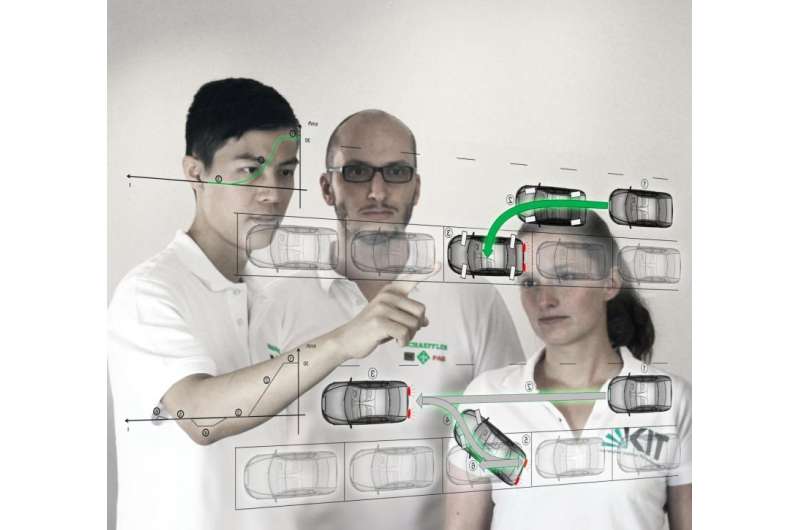Researching suitable concepts and prototypes for automated driving

Automobiles increase the mobility of their users. However, their maneuverability is pushed to the limit by cramped inner city conditions. Those who need to park their vehicles frequently, such as delivery services and mobile care providers, lose a lot of working time searching for and then getting into parking spaces. New chassis types with wheels that can be steered individually and electric drives make it possible to increase maneuverability and therefore efficiency, particularly in flowing urban traffic. The OmniSteer project, which is funded by Germany's Federal Ministry of Education and Research, is aimed at researching suitable concepts and prototypes by 2018 and has a budget of € 3.4 million.
"The increasing electrification and automation of vehicles makes it possible to offer users innovative driving functions", explain project managers Dr. Marcel Mayer from Schaeffler and Dr. Michael Frey from the Karlsruhe Institute of Technology (KIT). "The added value offered by electric drives compared to internal combustion en-gines is significant, because we can directly integrate electric drives into each wheel".
Together with innovative wheel suspension types that allow a wider range of steer-ing motion on the front and rear axle, suitable distance and lane guidance systems (highly-integrated lateral and transverse guidance systems) are also being devel-oped that will significantly increase maneuverability. "It is possible to switch seam-lessly between front-wheel, rear-wheel, and all-wheel steering depending on the situation", says Mayer, who is in charge of Schaeffler's "Automated Driving" work group and is carrying out research at the KIT as part of the SHARE (Schaeffler Hub for Automotive Research in E-Mobility) research collaboration. Driving maneuvers in restricted spaces – such as turning corners and changing lanes in a traffic jam or when approaching road works – will become more efficient with OmniSteer in terms of both time and energy, and this will improve the way in which lanes are utilized. Delivery services will also enjoy an enormous benefit, since it will even be possible to continuously pull into parking spaces at a right angle to the direction of the traffic, which in turn will make it possible for even the smallest parking spaces to be used and more rapidly allow traffic to continue moving. "These driving functions therefore directly increase safety, comfort, and energy efficiency as well as also improving the utilization of space and the flow of traffic in cities in the long term", explains Dr. Frey from the KIT's institute of vehicle systems engineering.
As part of the OmniSteer project, a scaled-down demonstration vehicle with a lateral and transverse guidance system capable of performing orthogonal, multi-directional, and non-linear driving and steering maneuvers is being developed. These three features allow innovative driving functions and thus make it possible to utilize the full potential of automation in electrically-driven vehicles. The vehicle will use sensors to identify its surroundings, calculate the best possible path of travel, and then independently perform complex maneuvers. A specially-developed display and operating unit will allow the driver to select and keep track of the driving functions and to intervene if necessary. The FZI Research Center for Information Technology is contributing maneuver and trajectory planning processes to the project, which select the best possible chassis configuration based on the situation.
The OmniSteer project is set to last three years. The "Omni" prefix (from the Latin word for "all" or "whole") firstly represents the holistic approach to steering. Additionally, however, it is also an acronym for Orthogonal (maneuvering at a right angle to the original direction of travel), Multi-directional (different travel paths are possible), and Non-linear (the position of the steering wheel is decoupled from the steering angle). The project partners are Schaeffler, PARAVAN, and HELLA, as well as researchers from the KIT and its Information Technology Research Center. The collaborative project is also receiving support from associated partners: DEKRA, Custom Interactions, and Cluster Electric Mobility South-West (ESW), which is coordinated by e-mobil BW, the innovation agency for the state of Baden-Württemberg. Around € 1.9 million of the € 3.4 million overall budget is being provided by the Federal Ministry of Education and Research as part of its "e-MOBILIZE - Intelligent and Efficient Electric Mobility for the Future" program.
Provided by Karlsruhe Institute of Technology




















